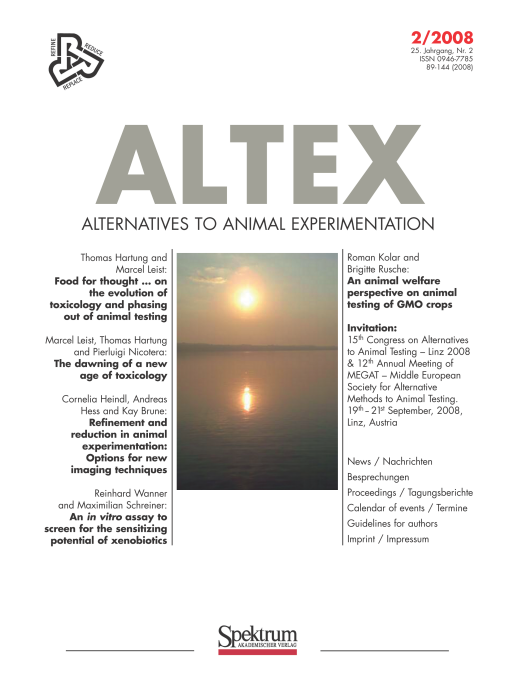The dawning of a new age of toxicology
Main Article Content
Abstract
Toxicology faces enormous challenges in a world in which we are exposed to thousands of chemicals and millions of mixtures thereof. Radically new approaches to this problem need to be developed. A milestone in this direction is the vision of the US National Research Council (NRC) “Toxicity testing in the 21st century: a Vision and a Strategyˮ. Currently, an alliance formed by the National Toxicology Program (NTP) and the Chemical Genomics Centre (NCGC) of the National Institutes of Health (NIH) and the Computational Toxicology Centre (NCCT) of the Environmental Protection Agency (EPA) is testing whether this new strategy can realistically form the basis of future public health decisions. The vision requires a radical paradigm shift in the approach to safety assessments, and turns the traditional procedures upside down. Where animal experiments used to be the most important technology, the future is seen in the strength of in vitro and in silico approaches based on human material. Todayʼs toxicity testing starts with an initial black box screen on animals, sometimes followed by mechanistic studies, while the new vision approaches hazard assessment bottom-up. The procedure would begin with in vitro tests to define the affected pathways. To fill remaining gaps of knowledge, limited and targeted testing in animals would then be performed as a possible second step. This means nothing less than changing toxicology from being a predominantly observational craft and regulatory support discipline back to a natural science with all its dimensions. The background and the implications are discussed here in particular for a readership with interest also in parallel European trends.
Article Details

This work is licensed under a Creative Commons Attribution 4.0 International License.
Articles are distributed under the terms of the Creative Commons Attribution 4.0 International license (http://creativecommons.org/licenses/by/4.0/), which permits unrestricted use, distribution and reproduction in any medium, provided the original work is appropriately cited (CC-BY). Copyright on any article in ALTEX is retained by the author(s).


